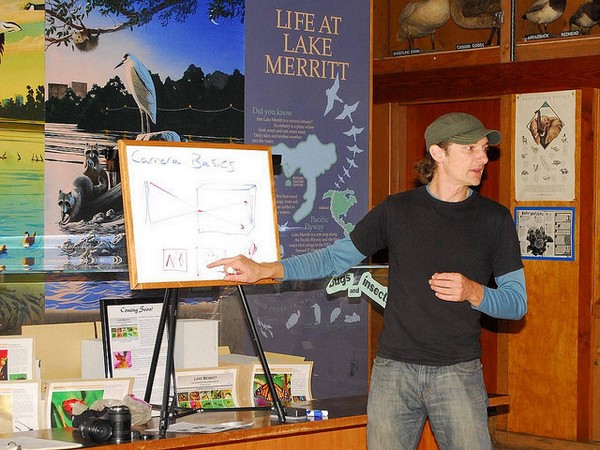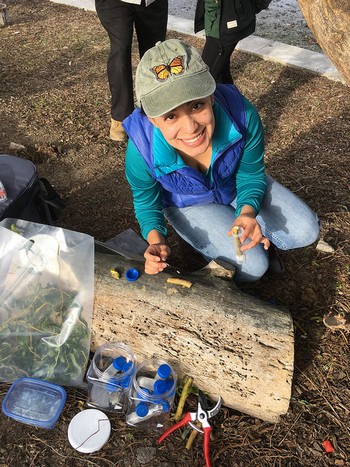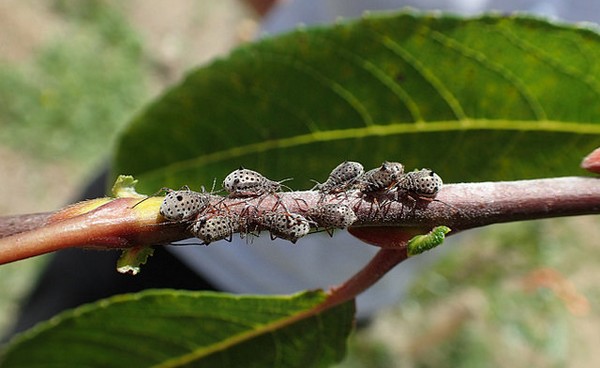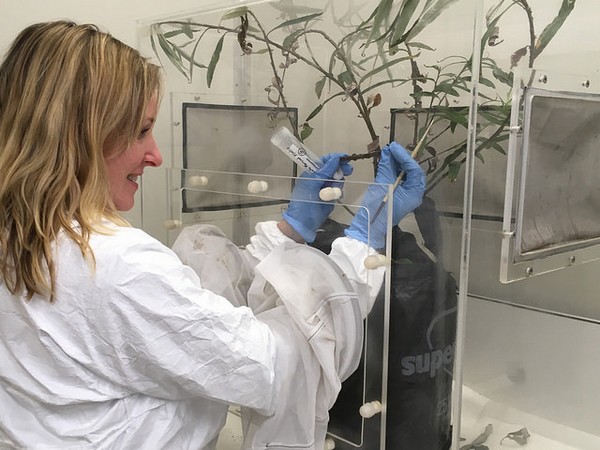Citizen science saves the day

It was a bright and sunny December day last year when Scion entomologist Stephanie Sopow found herself up a ladder in downtown Oakland, California. Stephanie was on a mission to collect giant willow aphids (GWA) Tuberolachnus salignus and their natural enemy, a tiny parasitoid wasp in the genus Pauesia.
At the bottom of the ladder, Steven Seybold, an entomologist with the USDA Forest Service, guarded the collection gear. In the trees down the street other students and staff from the University of California Davis were also collecting.
These aphids and wasps had proven especially difficult to find. Through the citizen science network iNaturalist, Stephanie made contact with Damon Tighe, citizen scientist extraordinaire and science educator based in California, who was able to give her the help she needed.
Four years earlier
GWA was first discovered in New Zealand near Auckland in December 2013, and since then it has popped up all over the country. For such a small seemingly innocuous insect, these pest aphids cause a lot of problems.

The aphids suck the life out of willows depleting them of liquids, weakening the trees which are widely used in New Zealand for slope stabilisation, flood protection and as vital pollen and nectar resources for honey bees in the early springtime.
Feeding aphids secrete a sticky honeydew that supports the growth of sooty mould that covers cars, decks, barbeques, kiwifruit vines, fruit trees and livestock. Pest wasps and bees are also drawn to the honeydew, creating a twofold problem for the beekeeping industry. The honeydew leads to an increase in pest wasps that kill honey bees and rob honey. Beekeepers also lose productivity because honey produced from this honeydew is granular and can’t be extracted.
Pesticides are not an option for GWA control because they would transfer into the honeydew, putting nectar feeders such as honeybees, tui and bellbirds at risk.

Finding parasitoid wasps
To fight the good fight against this aphid, Stephanie is leading a research project supported by the Ministry for Primary Industries’ Sustainable Farming Fund to identify possible biocontrol options for GWA.
Parasitoid wasps like Pauesia are ideal biocontrol agents. Their ability to search out and destroy only their desired targets is extremely useful because it prevents the need for any chemical control. The parasitoid wasp lays an egg in the aphid, a larva hatches, and this then kills the aphid host as it develops. In two to three weeks a new adult wasp pops out of the dead aphid. These tiny wasps have been noted in the scientific literature on GWA, but have never been deliberately released as a biocontrol agent and as such, very little is known about them.
Part of Stephanie’s research included travel to California to collect wasps to bring back to New Zealand, but finding the wasps wouldn’t be so easy. “On my first trip to California, I came back empty handed. I found a few small aphid colonies, but none of the aphids brought back to New Zealand contained parasitoids.”
The frustration of this led to a new plan of attack in preparing for the second collection trip. Using citizen science platform iNaturalist, Stephanie contacted Californian-based entomologists, willow enthusiasts and GWA observers as scouts to locate GWA colonies and, in particular, those that had been parasitised by the wasps.
One of these citizen scientists was Damon Tighe. Damon used the information provided by Stephanie to find the GWA colony in Oakland where Stephanie was able to collect enough parasitoids to start a new colony to test in New Zealand. Damon says, “Through iNaturalist and Stephanie’s requests through the platform, I became aware of GWA's impact in New Zealand and the desire to find parasitoids from a Californian population. I know next to nothing about insects, but iNaturalist facilitated my general curiosity in the organisms around me and combined with Stephanie’s expertise, created a potential solution for a very real problem.”

Back in New Zealand…
The parasitoids are now safely in the containment facility in Rotorua. Stephanie has managed to breed six generations and about 1700 individuals from the specimens she collected in Oakland. These are now being tested to ensure they won’t attack New Zealand’s native aphids.
“Some of New Zealand’s native aphids are rare and very hard to find, so we will test the parasitoid against a phylogenetically representative selection of aphids to ensure that no native aphids are threatened by Pauesia.”
If the native aphids are shown to not be at risk, we’ll initiate the Environmental Protection Agency biocontrol release process. Until then Stephanie says, “It was Damon and the citizen scientists in California, and our peers at the USDA Forest Service and University of California Davis that helped us get this far. To them - thank you.”
